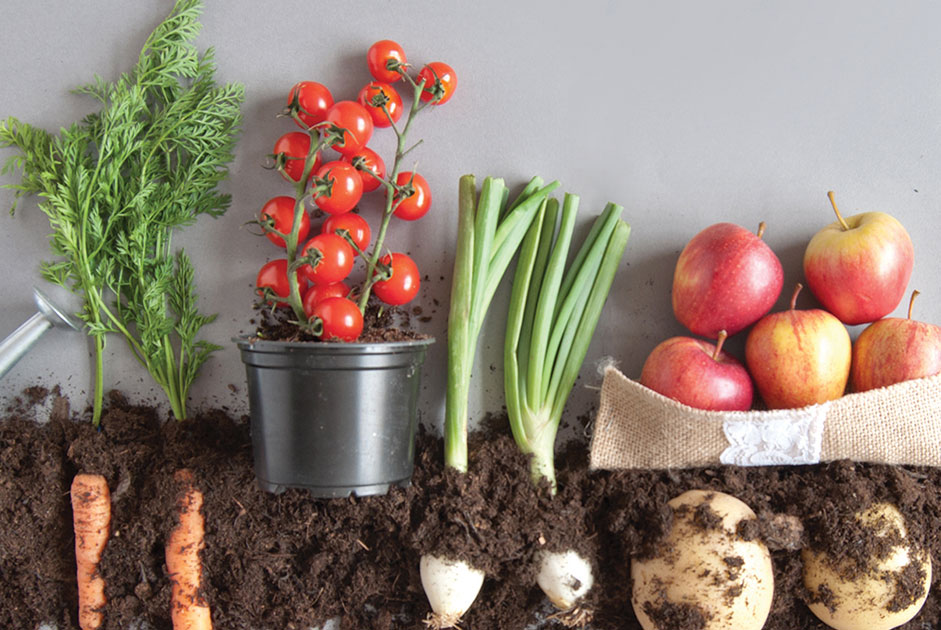BY LISA S.T. DOSS
The love of plants, whether they are flowers, herbs, fruits or vegetables, can thrive in your care whether they begin as seeds germinating in trays or are ready to transition to the earth. With a handful of practical tips, an eagerness to watch seedlings evolve, you can ease your purse and continue making green-fingered magic year-round.
January
Eager gardeners anticipating spring have more than just the spring seed catalogs to keep them satisfied. Just because the winds are fierce, it doesn’t mean you cannot enjoy gardening. With a few supplies, you can get a head start into the planting season. Buy a full spectrum grow light, roughly $16, or a 10-inch x 20-inch seedling warming mat, approximately $12. With a “seed starting potting mix,” pots and a tray to contain your plants, start with seed packets of herbs, especially mint and vegetables such as broccoli, celery or kale. Use a water bottle to spritz your plants for the first two weeks.
February
Do you have any additional room to start a few more trays? Consider beginning the germination process of beetroot, Brussel sprouts, celery, peppers, eggplant, leeks and tomatoes.
Be aware of farming or small general stores selling young flowering vines or small fruit bushes, like berries. Plant it in a pot, and allow the natural sunlight to foster new growth and maturity.
March
If you can bear the cold temperatures, start tilling and preparing your soil. One method is to create mounds with a minimum of two-foot rows. Rains will trickle down the hill to foster adequate moisture, rather than drown in pools of water. Start planting rows of asparagus, beets, broccoli, Brussel sprouts, cabbage, carrots, cauliflower, collards, lettuce and spinach, cloves of garlic, crowns of horseradish, onions, potatoes, radishes, sweet corn, turnips and yams.
Tip: Plant onions and carrots close to each other. They need little room to grow.
April
Be wary of planting your herbs outdoors. Catnip, chamomile, chives, dill, lemon balm, parsley, all mints and valerian are invasive and will spread quickly!
Start experimenting with ways to save space. A sturdy trellis would be a solution for cucumbers, small melons, peas and beans. Chicken wire tied in a circle and filled with layers of straw and dirt are perfect for potatoes. Stakes can adequately hold not just tomatoes, but tall herbs such as dill, as well. This year, grow a hanging basket of strawberries.
Tip: Plant vines such as watermelon in between rows of corn.
May
- Create an “L” shape and till in compost, mulch and leaves to create an environment of decent soil. Plant sunflowers to feed the birds and deter the wildlife, such as deer.
- Plant multiple crops two weeks apart of beans, cucumbers or corn to ease the work during harvest.
- Start collecting the flowers of leaves of herbs. Take cutting to dry first thing in the morning!
June
Mark your calendar. It’s pumpkin time! The best location is along the border of your garden. Leave at minimum two feet between seeds, and thin out clusters often. To train your vines to grow outward, consider using a sturdy trellis. Remember, pumpkins need plenty of water!
July
Enjoy the harvest. Be sure to cut back your herbs to ensure new growth. Start thinking about the fall garden!
August
The ideal time to begin planting cold crops, such as carrots, leeks, lettuce and even potatoes.
September
Despite the short season, consider a second crop of your favorite vegetables, especially if you love salads.
October
A fantastic educational experiment for children is to regenerate your favorite foods. Just place basil, carrots, celery, cilantro, garlic, ginger, green onions, lemongrass, lettuce and sweet potatoes in a Mason jar full of water, and watch the transformation!
Tip: Rather than toss your leaves to the curb, throw them on your garden to lighten heavy soils and attract earthworms.
November
Propagating plants from cuttings is not difficult. Take the elderberry bush, for instance. Cut a six-inch woody stem just below a leaf of elderberries, lilacs or butterfly bushes. Soak the stem in water for one day. Cut the end before dipping it into a rooting hormone. Plant directly into a “seedling starter potting mix.” Mist daily with a spray bottle. Do not saturate!
December
If you love gardening and realize your interior space is not large enough, make a cold frame or build a small greenhouse.
Gardening can occur throughout the year! It’s never too early to try a new technique!






















